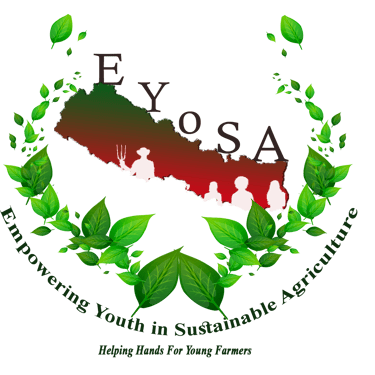ZERO HUNGER CHALLENGE AND THE ROLE OF AN INDIVIDUAL IN ACHIEVING IT
By 2030, the global population is expected to reach approximately 8.3 billion. Despite this growth, a staggering 815 million people worldwide go to bed hungry every day. Hunger and food insecurity are concentrated mainly in East Asia, South Asia, and Sub-Saharan Africa. While countries like China have reduced poverty by half and India by 36%, Nepal still faces significant challenges, with approximately 5 million people undernourished and nearly one in four living below the poverty line (World Bank, 2020).
2/2/20183 min read


In response to these global food security issues, former UN Secretary-General Ban Ki-moon launched the Zero Hunger Challenge in 2012. This initiative aims to provide the world with sufficient, nutritious, and high-quality food, ultimately leading to healthy, productive lives by 2050 (United Nations, 2012). Nepal, like many other countries, has committed to this challenge, aligning it with the broader Sustainable Development Goals (SDGs). Specifically, the Zero Hunger Challenge focuses on five SDG-related objectives:
Ensure sustainable food systems from production to consumption.
End rural poverty by doubling small-scale producer income and productivity.
Eliminate food loss and waste.
Guarantee access to adequate food and a healthy diet for all people, all year round.
End all forms of malnutrition.
The Role of Individuals in Achieving Zero Hunger
The Zero Hunger Challenge highlights the importance of individual actions in the collective global fight against hunger. One of the most critical areas where individuals can contribute is through the reduction of food waste. Globally, around 1.3 billion tons of food are wasted or lost each day, contributing to approximately 8% of global greenhouse gas emissions. If individuals manage their food consumption by reducing waste, it is estimated that 14% of greenhouse gas emissions from agriculture could be reduced by 2050 (FAO, 2015).
Water conservation is another key area where individuals can make a significant impact. Water is essential for food production, and every bit of food wasted equates to wasted water. For example, it takes 75 liters of water to produce an apple, 25 liters for a potato, and around 140 liters to produce a single cup of coffee (FAO, 2013). By managing food consumption wisely and conserving water—whether by reducing waste in households, schools, or public offices—individuals can play a crucial role in addressing hunger and environmental degradation.
Additionally, plastic waste management is critical for maintaining a sustainable environment. Plastic bags can take up to 500 years to decompose, contributing to environmental pollution and affecting agricultural land. Individuals can minimize plastic use or opt for recycling to reduce the burden on the environment. There is ongoing research to develop biodegradable plastics from carbonates and sugar, which could offer more sustainable alternatives (Bhardwaj et al., 2020).
Agriculture and Sustainable Practices
Agriculture remains one of the most crucial sectors in the fight against hunger. Individuals, especially farmers, can adopt sustainable agricultural practices such as organic farming, minimal chemical fertilizer use, and improved tillage methods like conservation and zero tillage. These practices contribute to maintaining healthy soil and reducing greenhouse gas emissions. For instance, direct-seeded rice techniques have been shown to reduce methane emissions compared to traditional paddy methods (Ladha et al., 2016).
In areas like Sub-Saharan Africa, drought often exacerbates food insecurity. Individuals can contribute by adopting climate-smart irrigation systems, which store rainwater and wastewater for use during dry periods. Additionally, the diversification of crops and adaptation to climate change are essential. Farmers can shift from staple crops to more resilient horticultural crops, increasing both food security and income (FAO, 2017).
Furthermore, agroforestry practices, which combine trees and crops, are beneficial for improving food production and acting as carbon sinks, thereby contributing to climate change mitigation. Healthy soils, enhanced by agroforestry, are also significant in capturing atmospheric carbon dioxide, making them crucial in the global effort to fight climate change (Smith et al., 2014).
Energy Efficiency and Home Gardening
Energy conservation is another area where individuals can make a difference. By turning off unnecessary lights, fans, heaters, and electronic devices, individuals contribute to reducing energy consumption. Moreover, investing in renewable energy sources, such as hydroelectricity, helps generate power for food processing and production, further supporting global food security.
In addition to these efforts, home gardening is a simple yet effective way to combat hunger at the household level. Many countries, including Nepal, have integrated gardening and nutrition education into school curricula, encouraging students to grow their own food and develop a love for nature (FAO, 2020). While home gardening alone may not be sufficient to end hunger, it can contribute to better nutrition and food security at the community level.
Conclusion
Every individual plays a vital role in achieving the Zero Hunger Challenge. From reducing food waste and conserving water to adopting sustainable agricultural practices and energy conservation, individual actions can collectively make a significant impact on global hunger. As engineers of a sustainable future, we can work together to ensure that future generations inherit a world free from hunger and malnutrition.
References
Bhardwaj, H., Gupta, R., & Tiwari, A. (2020). Biodegradable plastics: A sustainable approach for plastic waste management. Environmental Science and Pollution Research, 27(9), 10530-10540.
FAO. (2013). Water use in agriculture. Food and Agriculture Organization of the United Nations. Retrieved from http://www.fao.org/water.
FAO. (2015). Food wastage footprint & climate change. Food and Agriculture Organization of the United Nations. Retrieved from http://www.fao.org/3/a-bb144e.pdf.
FAO. (2017). Climate-smart agriculture. Food and Agriculture Organization of the United Nations. Retrieved from http://www.fao.org/climate-smart-agriculture.
FAO. (2020). School gardening and nutrition education. Food and Agriculture Organization of the United Nations. Retrieved from http://www.fao.org/school-gardens.
Ladha, J. K., et al. (2016). Direct-seeded rice: The Asian perspective. Advances in Agronomy, 144, 289-354.
Smith, P., et al. (2014). Agriculture, Forestry and Other Land Use (AFOLU). In Climate Change 2014: Mitigation of Climate Change.
Empowering Youth In Sustainable Agriculture (EYoSA)
Donate us for Empowering more Ag Youth
Looking for Collaboration ?
Explore EYoSA resource material and Publication
© ® 2018 by Empowering Youth In Sustainable Agriculture (EYoSA). Design by Axile Pvt.Ltd.
Become a EYoSA member and get update with resource, program, events, published resource and innovation.
Build a strong network and connect with Next gen Agriculture Youth with Experts and Farmers
EYoSA Publications
Farmer Magazine
Innovation Lab
e-Library
Report
Assets
Partners
Projects
Programs
Events
Info-graphs
Crop-charts
Organization
About Us
Our Journey
FAQ
Contact Us
Organization
Career
Research Grants
Internship
Farmers Field Day


